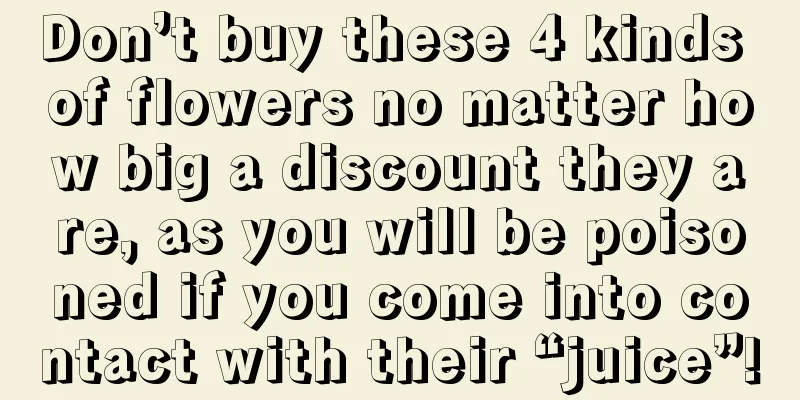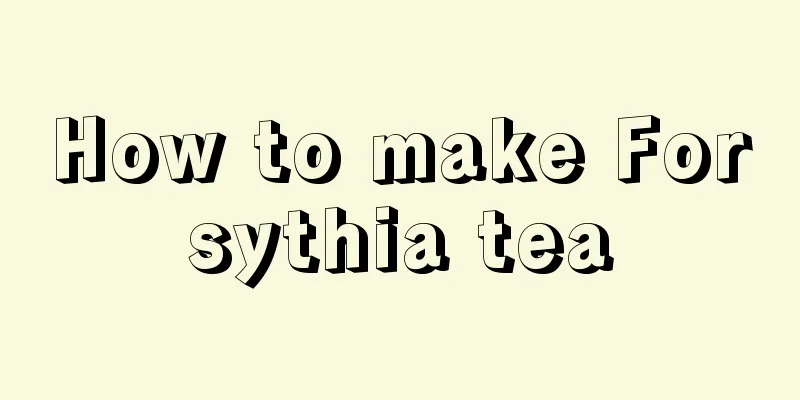Don’t buy these 4 kinds of flowers no matter how big a discount they are, as you will be poisoned if you come into contact with their “juice”!

|
We all know that there were many "femme fatales" in ancient times. They had beautiful faces but dark hearts. There are also "femme fatales" in the world of flower plants. They look green and attractive on the outside, but their juices are poisonous. Keeping them at home for a long time may cause damage to your health. So tell your parents, these three kinds of flowers, no matter how cheap they are, should never be brought home! 1. DaffodilsWe all know that daffodils have white petals and light yellow centers. At first glance, the combination of white and yellow makes people feel comfortable. However, you must not be deceived by the beautiful image of daffodils. If you keep them at home, they can cause great harm. The stems and leaves of daffodils contain latin toxins. If children at home accidentally eat them, the consequences will be disastrous and may cause symptoms such as vomiting and diarrhea. Similarly, the juice of daffodils is also poisonous. If it accidentally gets on your skin, even if you rinse it with plenty of water, you will still experience allergies and skin redness and swelling. 2. Euphorbia miliiEuphorbia milii is one of the more common household flowers. When it blooms, its thick petals and green branches and leaves look very cute. So even though it has thorns on its body, it is still loved by countless people. However, if there are children and elderly people at home, do not try to care for Euphorbia milii easily! The branches of Euphorbia milii are covered with sharp thorns, which contain a lot of toxic substances. If your skin is accidentally pricked by them, it will react immediately. Not only will it feel red and itchy, but the skin will also swell, and it will take several days to go away. 3. OleanderWe learned about oleander in our textbooks when we were young. It is a poisonous flower, but because it looks very beautiful when it blooms, many flower lovers still bring it home. But in fact, flowers like oleander are really not suitable for growing at home. Oleander is different from other poisonous flowers. Not only is its juice poisonous, but its stems, leaves and fruits also contain a substance called oleandrin. If you accidentally eat any part of oleander, it will cause nausea and irritability, and in severe cases may even lead to respiratory diseases. It’s really scary to think about it. 4. Dripping Water GuanyinIn fact, sometimes not only flowering flowers are poisonous, but also some varieties of green plants are the same, and the weeping angel is one of them. The weeping angel plant has large green leaves and looks very elegant and beautiful, so many flower lovers like to grow it in the living room. However, this is not a good practice. Huahua has seen news before about children being poisoned after accidentally eating weeping angel plants. The main toxin of the weeping angel is concentrated in the stems and leaves. If you accidentally eat it, you will experience symptoms such as numbness of the tongue and inability to speak. Sometimes in severe cases, it can even cause suffocation. It seems that the toxin of the weeping angel is quite powerful. If you are planning to grow flowers, it is best not to choose these "poisonous flowers". If some flower lovers already have them at home, try to place them outdoors so that they will not be accidentally touched by children at home. If you know of any poisonous flowers, please feel free to share them with Huahua. |
Recommend
Does the red spider lily prefer shade or sun?
Does the red spider lily prefer shade or sun? Red...
How to cultivate the sedge
1. Soil It has a relatively strong root system an...
Can Amaryllis be watered with beer water?
Can Amaryllis be watered with beer water? Amaryll...
How to judge whether succulents need to be repotted
When to change the pot: 1. If you suddenly find t...
What is the best month to plant ornamental gourds?
When to plant ornamental gourds Ornamental gourds...
Where does durian grow, on trees or on the ground?
1. Where do you grow? Durian grows in the tropics...
When do figs mature? How do figs be stored?
1. Maturity Time Figs generally ripen in summer a...
What are the cultivation methods and precautions of Selaginella
Selaginella cultivation method When caring for Se...
Common pests of Clivia
Common pests of Clivia The most common insect pes...
When is the best time to harvest white radish?
White radish harvest time White radish can be har...
How to grow Chinese evergreen so that its leaves are round and big
1. Soil The soil should be selected appropriately...
How to grow Ixora? Cultivation methods and precautions of Ixora
The ivy is also known as Yingdan, Xiandanhua, and...
Soilless cultivation method of lotus bowl
Preparation Cultivation medium Although bowl lotu...
Can ferrous sulfate be used to water succulent plants?
Can ferrous sulfate be used to water succulent pl...
How to transplant Areca palm
1. Transplantation time Transplantation is someti...









